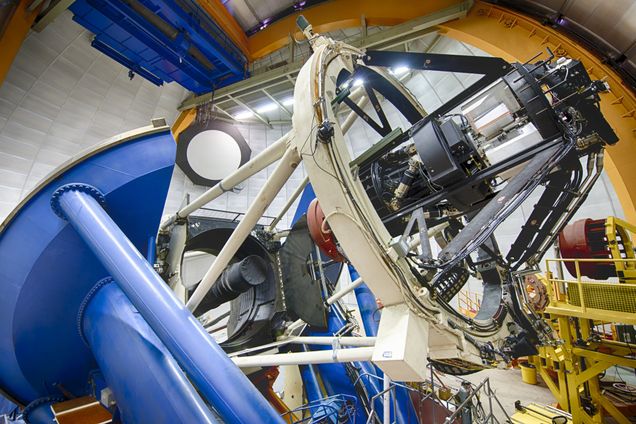Mapping the Universe
Dillon Brout is searching for the origins of the cosmos—and continuing a family legacy
Dillon Brout is searching for the origins of the cosmos—and continuing a family legacy
Exploding stars. Colliding galaxies. A mountaintop camera that can see the beginning of time. These aren’t plot points in the latest sci-fi series. They’re the real-world building blocks of the Dark Energy Survey, a decade-long effort to map the universe and to understand what it’s made of.

More than 400 scientists have contributed to the Dark Energy Survey (DES), including Dillon Brout, an assistant professor of astronomy and physics. He joined the project at its outset, as a graduate student at the University of Pennsylvania, and co-led the cosmological analysis team that focused on calculating the locations of supernovae, which provide clues critical to measuring the size of the universe.
Cosmology is the branch of astronomy devoted to understanding the origins and nature of the universe as a whole. Like all explorers, cosmologists need a map. In the decade since DES launched, Brout and his peers have conducted the largest survey of supernovae ever, identifying approximately 1,500 of the exploding stars and using each one as a precise point in their map of the expanding universe. Their findings, submitted to The Astrophysical Journal in January, provide an unprecedented look at the way dark energy causes that expansion to accelerate.
Brout’s great-granduncle—the man who encouraged him to pursue cosmology—was a renowned physicist who also had been drawn to the mysteries of the universe’s expansion. For Brout, the DES wasn’t just a professional milestone—it was the continuation of a family legacy.
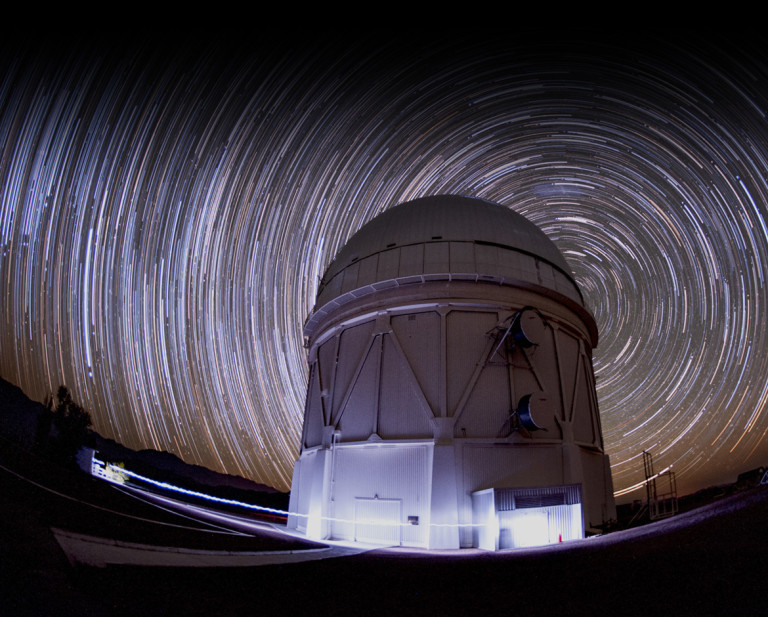
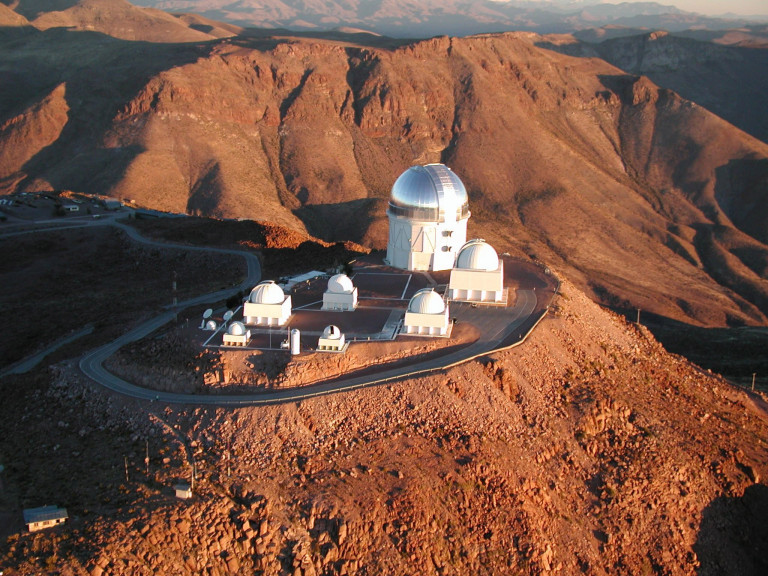
There is much more that scientists don’t know about the universe than they do know. Approximately 95 percent of the universe consists of dark matter and dark energy, opposing forces that they know must exist but can’t see—which is why they’re “dark.” Figuring out how these mysterious forces shape the cosmos could explain the big bang, the explosion that created the universe nearly 14 billion years ago.
“Ever since that initial moment of creation, the universe has been going through a tug of war,” Brout says. “What we’re doing with the supernovae is using them as a measuring stick to study the interplay between the gravitational pull of dark matter inwards and the outward pressure of dark energy.”
The results of that battle have shaped scientific theories dating back to 1917, when Albert Einstein hypothesized that the universe was static and eternal in his general theory of relativity. To balance the inward pull of gravity of all galaxies, he believed, there must be something pushing outward in the empty space between galaxies: an “energy of empty space,” that scientists call the cosmological constant. Not long after Einstein’s theory, in 1929, American astronomer Edwin Hubble provided concrete evidence that the universe is not static, but rather that it is expanding and that it must have had a beginning—the big bang. At the time, Einstein regarded his static universe hypothesis and his theory of the cosmological constant as the biggest blunder of his career. However, he may not have been totally wrong, says Brout. The “energy of empty space” might be the dark energy that cosmologists study today, with one significant difference: it appears to be winning that eternal tug of war.
To collect their data, Brout and his colleagues used a relatively basic strategy: they photographed the sky. Of course, they did so with one of the most powerful digital cameras ever made. The 570-megapixel Dark Energy Camera, mounted on a telescope at the Cerro Tololo Inter-American Observatory in the Chilean Andes, focuses on huge swaths of the sky. “We don’t care about single objects or stars,” Brout says. “We survey as many stars and as many galaxies as possible to collect an understanding of the entire universe and to infer what the whole universe is doing.”
The researchers used a sophisticated process to analyze the images, which is where Brout made one of his biggest contributions during his PhD—leading construction of the system that extracted precise measurements from the photographed supernovae. He now leads the analysis team that brought the DES “from image pixels all the way to the fundamental properties of the universe,” he says.
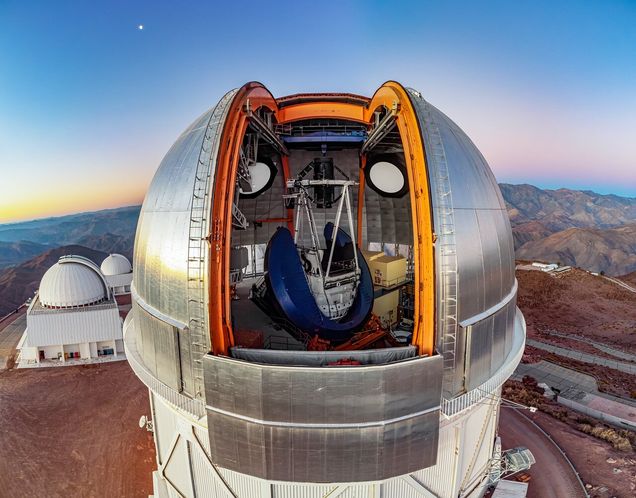
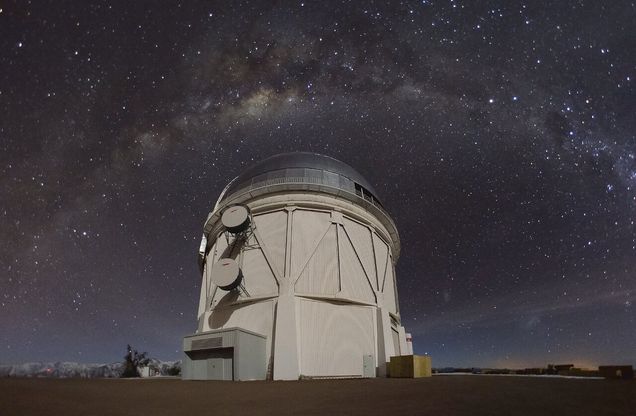
A single Supernova emits as much light as an entire galaxy of 200 billion stars, so they make ideal reference points for mapping the universe. The team was able to photograph supernovae from 500 million light years ago—nearby, by cosmology standards—and also discovered supernovae more than eight billion light years away. “This means that we get to see the universe as it was more than half of the way back to the big bang,” says Brout.
DES is the largest survey of its kind to date, and to sort through hundreds of thousands of objects, Brout relies on machine learning algorithms to help identify each supernova photographed. Then the team measured the brightness and the redshift of its light—the wavelength of light moving away from us shifts to the red end of the spectrum, while light moving toward us shifts to the blue end. With that information, the DES team determined the movement of galaxies and the rate of the universe’s expansion—explaining how the universe works with an unprecedented level of detail.


With his DES project wrapped up, Brout is looking ahead to the next major international collaboration. He’s also pausing to appreciate how he ended up here—because he nearly followed a different path.
When Brout became interested in physics in high school, he learned a surprising fact from his parents. “You know, we have some distant relative who lives in Belgium and is apparently some important physicist,” they said. “I came to realize very quickly that he is one of the most important physicists of all time,” Brout says.
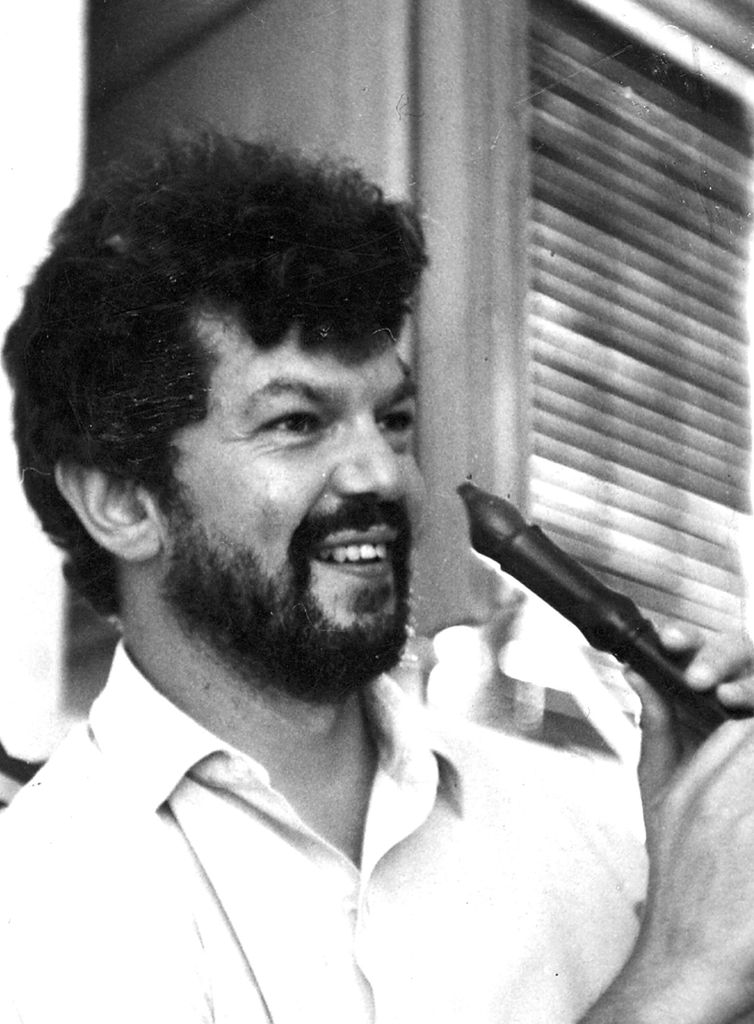
Turns out, his great-granduncle, Robert Brout, along with François Englert, published the first paper to theorize that a “God particle” gives everything in the universe mass. Their theory dominated particle physics for more than half a century. Then, in 2012, scientists identified such a particle, which by then was called the Higgs boson. In 2013, Englert and Peter Higgs were awarded the Nobel Prize in physics for their work in developing the theory; Robert Brout likely would have received the award with them, but he’d died a year earlier.
Dillon Brout has been researching his great-granduncle’s legacy and hopes to write a book. “He’s up there with Einstein because of his impact on so many different aspects of physics,” he says.
Brout only learned of his great-granduncle a few years before his death, but they exchanged frequent letters in that time. When Brout shared his interest in particle physics, his great-granduncle encouraged him to study cosmology instead. “In 2008, he was thinking about the birth of the universe,” Brout says. “That set me on the trajectory that brought me here today.”
In 1978, Robert Brout coauthored a paper about how the universe may have expanded in the initial moments of the big bang, a theory that is now called inflation. For Dillon Brout, working on DES and his new project is a chance to build on the idea. “If we could connect the dots between what the universe is doing now and what caused that initial inflation—that would be a dream for me.”
With all of the progress made in 10 years of DES, Brout says, a significant breakthrough is getting closer. But mysteries still remain. Is dark energy Einstein’s “energy of empty space?” Or was Einstein wrong, and is there a different explanation for the nature of the universe, yet to be discovered?

Brout is now leading a project to answer those questions: the Rubin Observatory Legacy Survey of Space and Time (LSST) Dark Energy Science Collaboration, located one mountaintop over in the Chilean Andes. The LSST will build upon the technology of DES, but with upgraded hardware, a larger field of view, and more sensitive electronics—“major improvements in every facet of building the telescope,” Brout says.
The DES identified 1,500 supernovae; the LSST could find 1 million. “This is revolutionary. We can ask different questions,” he says. “We can probe the universe in completely new ways. It’s a whole new game we’re going to be playing.”
